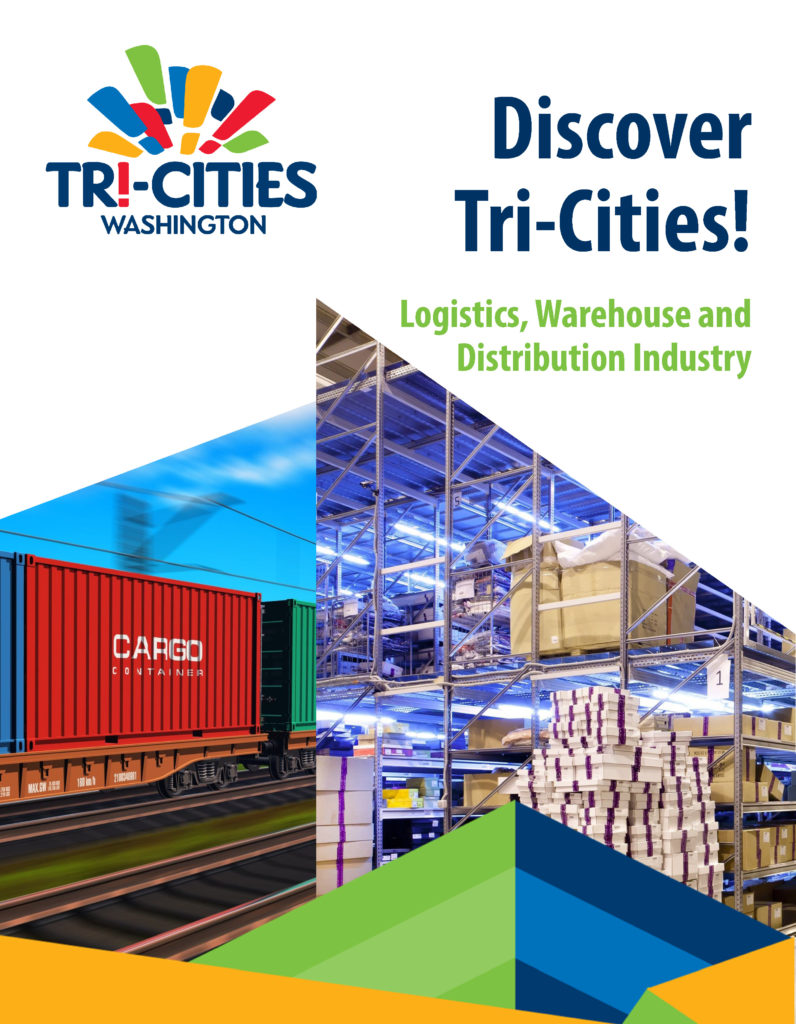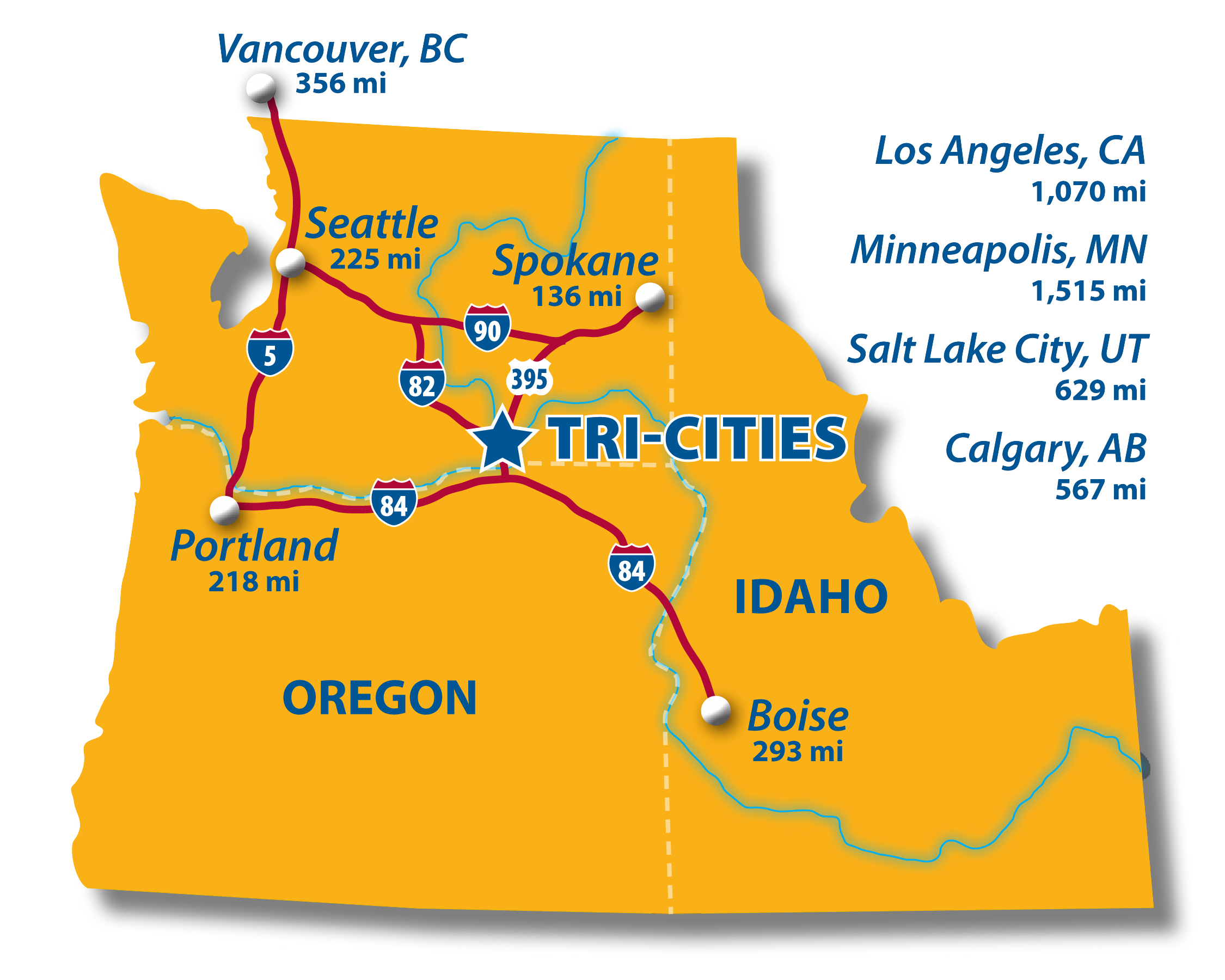World Class Logistics for the World’s Best Products
Because we are Here, There, and Everywhere
Here
Over 18 million people live within five-hundred miles of the Tri-Cities, spending over $176 billion on retail merchandise. As a result, business leaders and logistics providers choose the Tri-Cities as the ideal location for accessing the Pacific Northwest and all western states and western Canada.
Logistics companies thrive here because they are close to customers, have highly skilled workers, enjoy inexpensive power and affordable land and operate in a predictable regulatory environment.
There
Industries in the Tri-Cities send products across the U.S. Companies like Railex manage expedited coast-to-coast refrigerated rail freight service. Trucking companies and airlines deliver frozen foods, raw agricultural products and finished goods throughout the nation.
Everywhere
As a major international trade center, the Tri-Cities supplies over 100 countries on all seven continents. Last year, total exports in merchandise from Washington totaled $90.5 billion. Tri-Cities industries were major contributors in 17% of those exports, valued at $15 billion.
Logistics services are critical to trade with the BRIC and ASEAN countries, Japan, South Korea, Mexico, and South America; all huge markets for unique consumer goods and products. The unmatched transportation network in the Tri-Cities and the Columbia Basin are critical supply chain assets for serving international locations.




